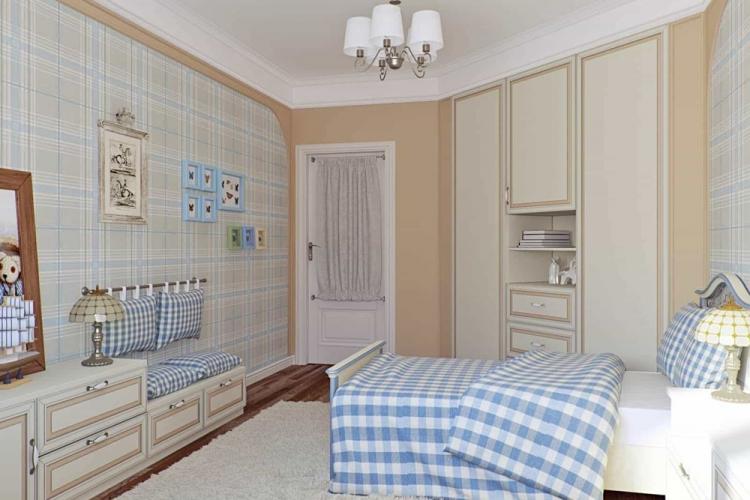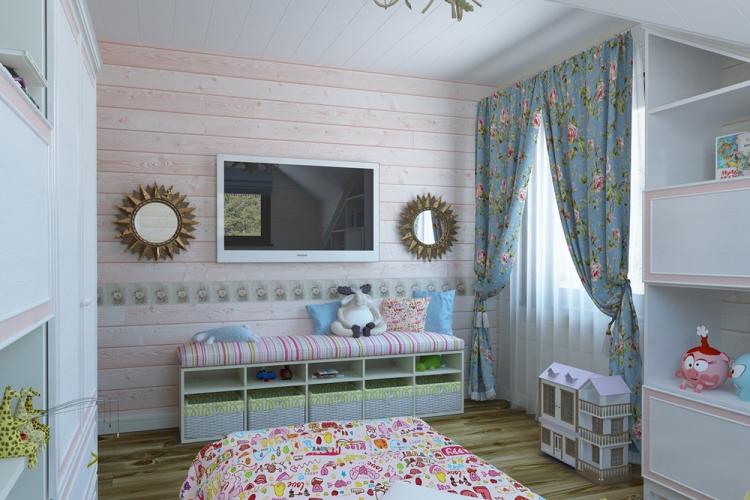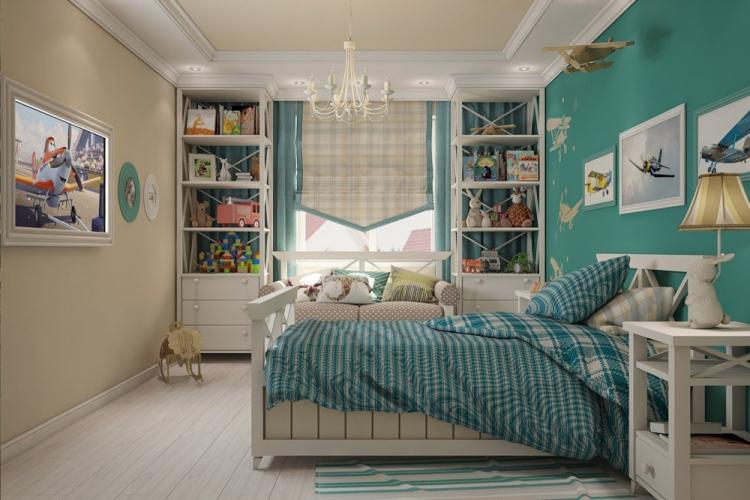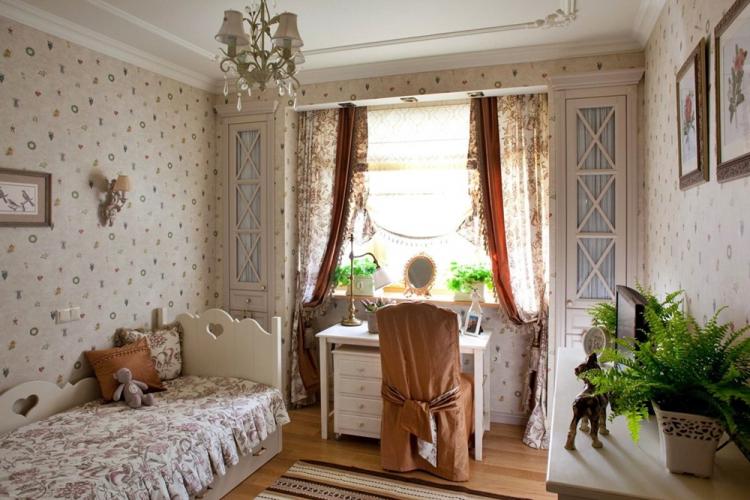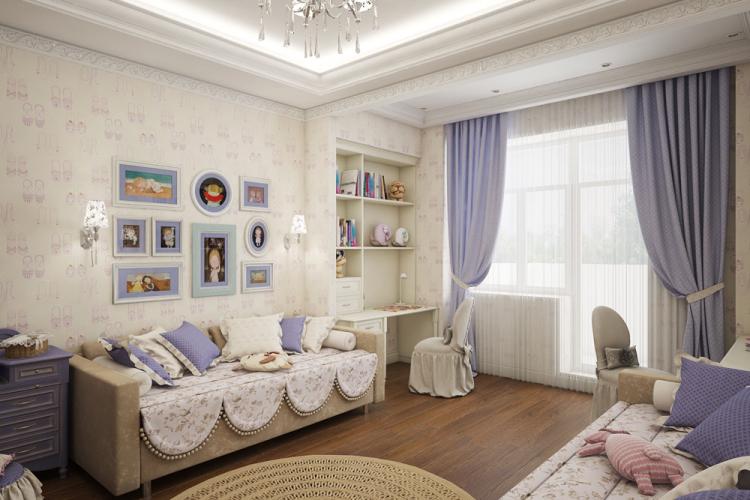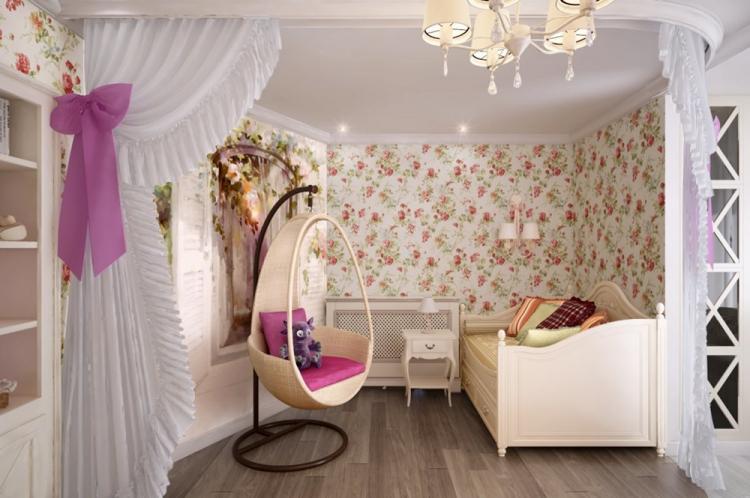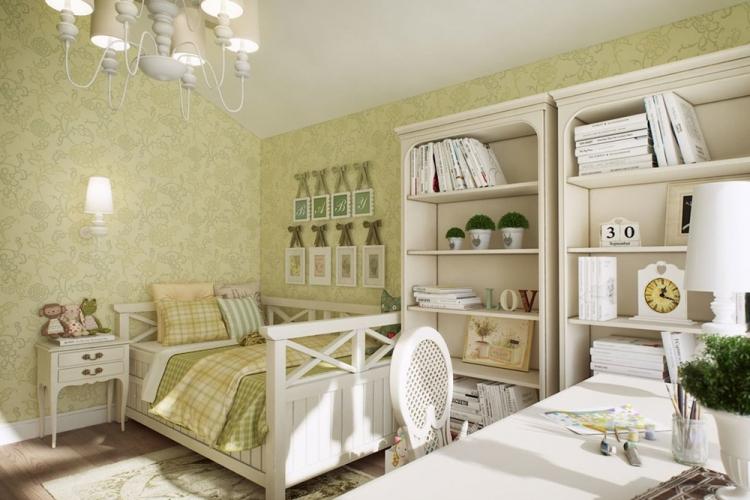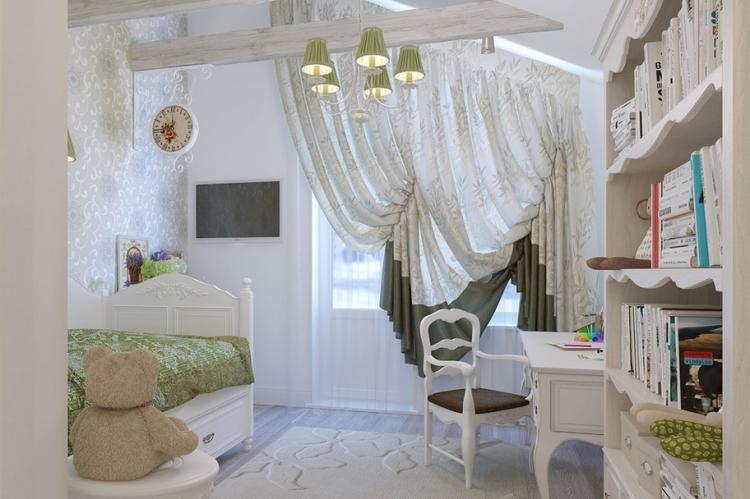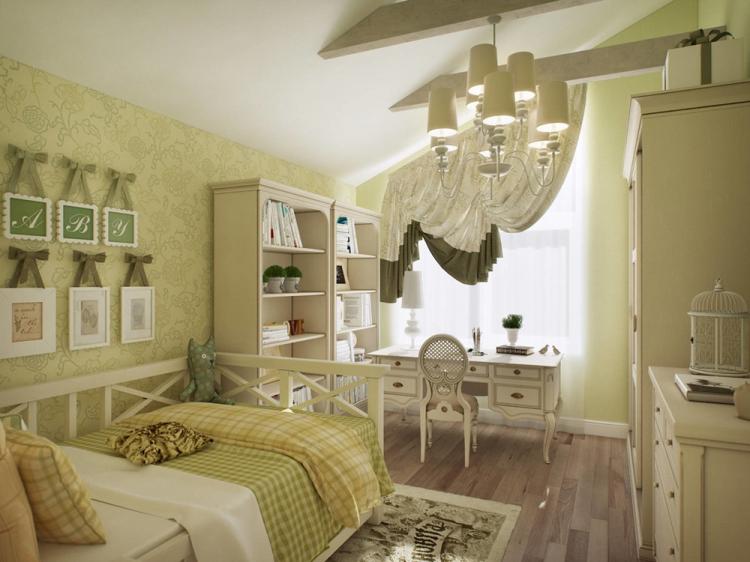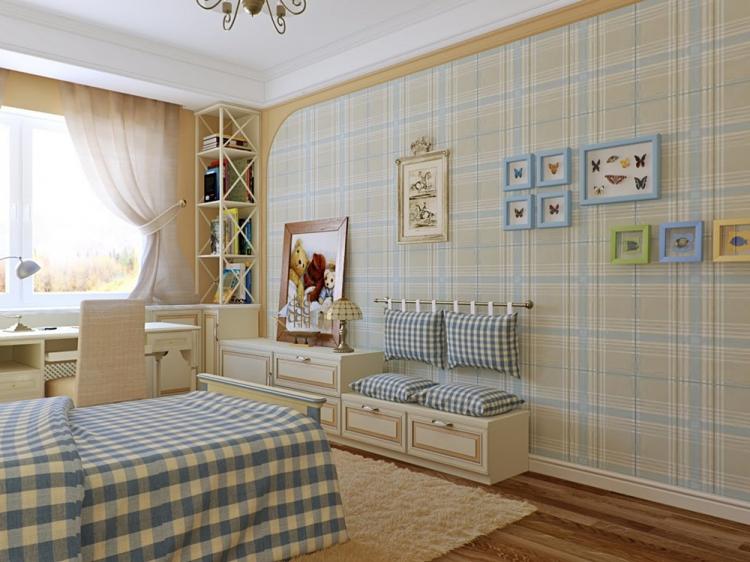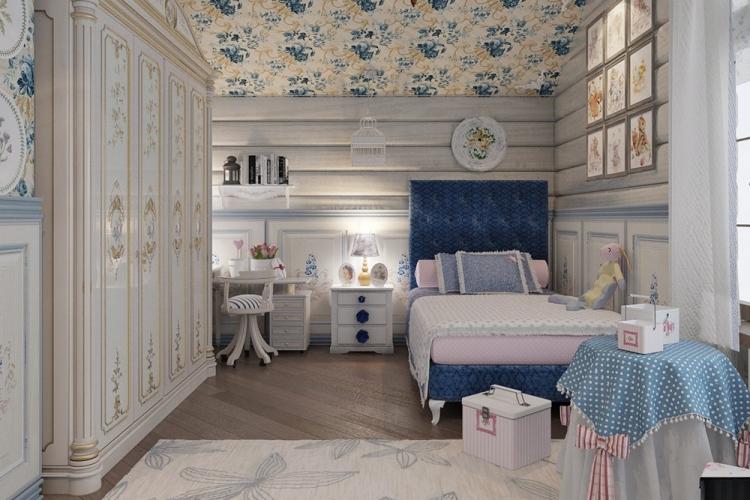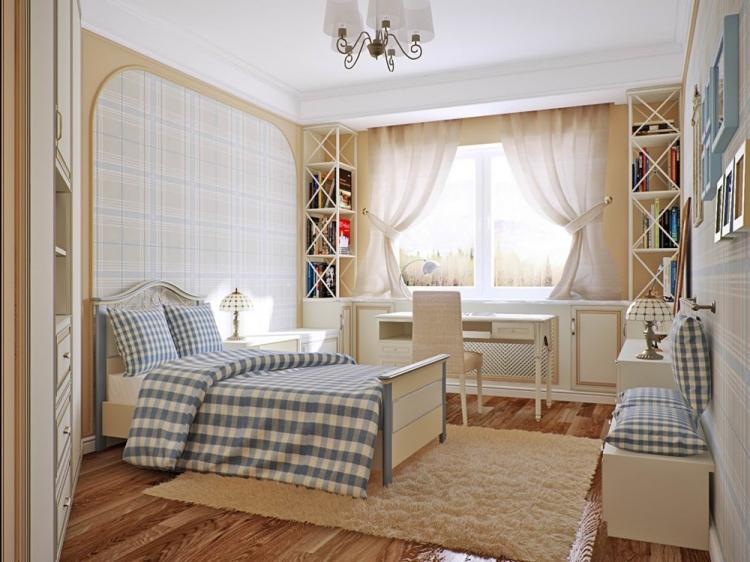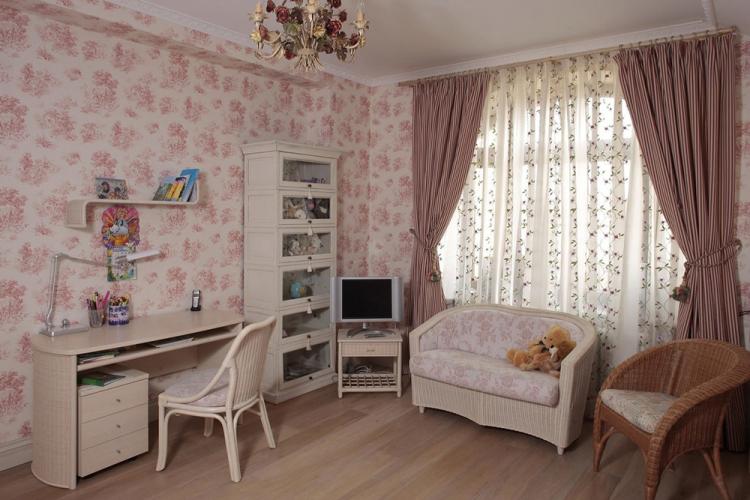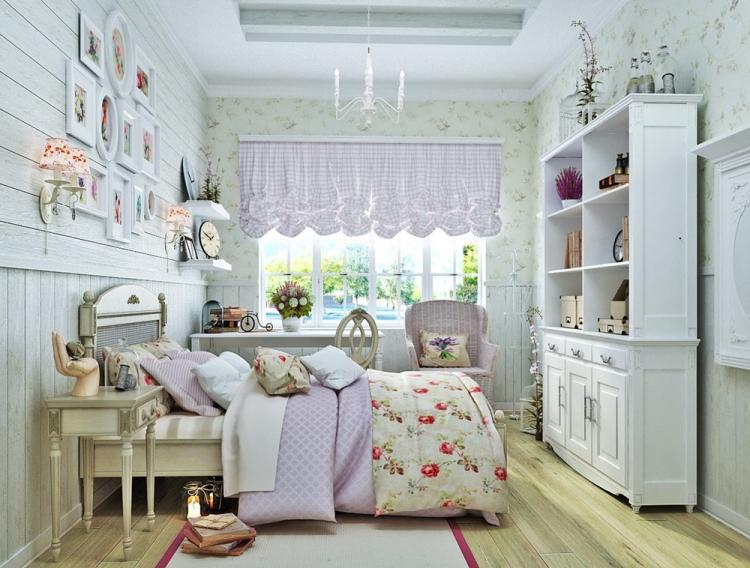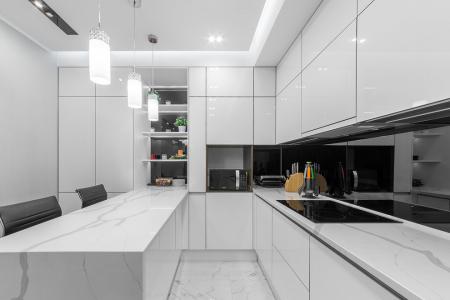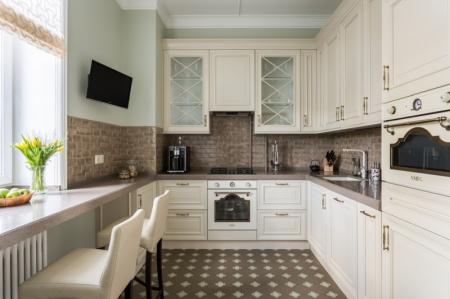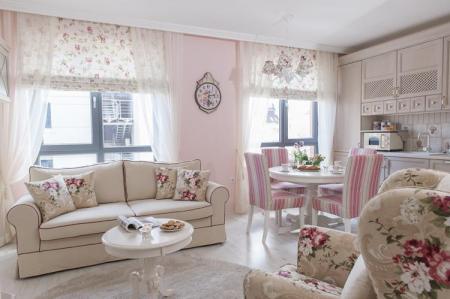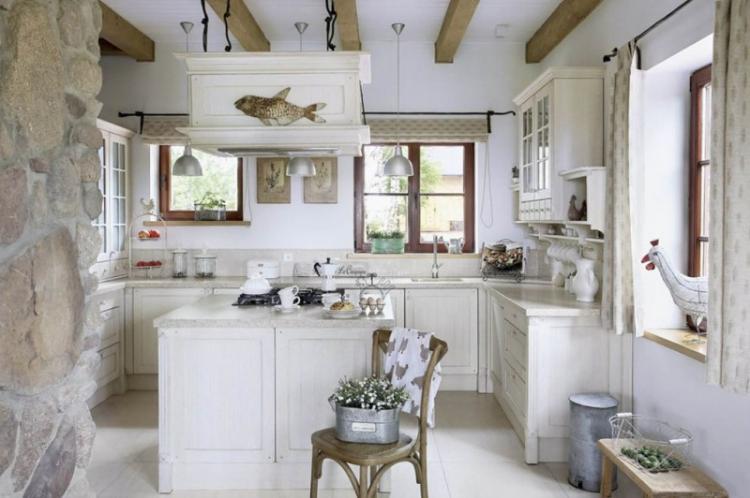
Do you like sophistication, simplicity and fabulous romance? All this combines elegant French Provence. It all seems to be saturated with the charm of Southern France, sunshine and the scent of wildflowers. No one in the whole world finds magic in minor everyday trifles as skillfully as the French. And we will be happy to help you embody real Provence in your apartment!
History and origins
The origins of Provence began in the 17th century, as opposed to urban classicism. Residents of the southern provinces wanted to move away from the bustle of the city closer to the harmony of the countryside.
The magical charm of amazing landscapes, lavender valleys and rocky shores has inspired painters, writers and composers. Whole families of artisans, lawyers and doctors built quite a comfortable life outside the city. They had ample opportunity to combine lightness and naturalness with a comfortable lifestyle.
By the 19th century, the style had finally taken root on the sunny Mediterranean coast and beyond. He absorbed the coziness of village houses, the elegance of grape shoots, the aroma of alpine meadows and all their color variety, burnt out under the sun's rays.
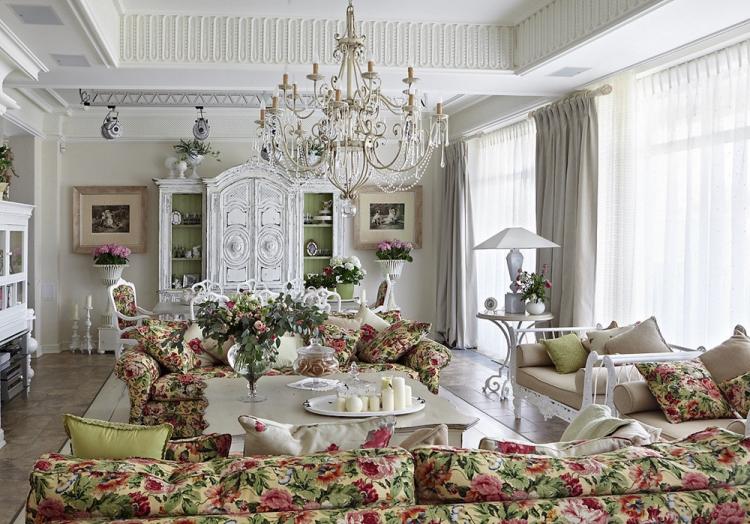
General features of the Provence style
For all its versatility, Provence has many characteristic features that immediately pop up in the imagination of even people far from the design world. These are pastel colors, handmade, bleached wood, carved furniture and an abundance of textiles.
The main shades are muted, diluted, faded. These are milky yellow, mint, cream, pale brown, beige, pale blue, pastel pink, lilac and lavender.
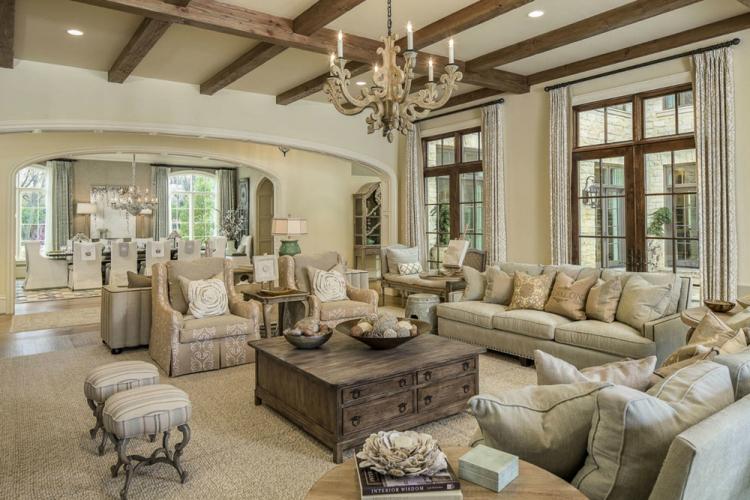
Aged furniture with a simple and sometimes even naive decor is actively used in the interiors. For example, with carved flowers, leaves, vines.
Small elements flourish in Provence: embroidered pillows, openwork napkins, small floral ornaments, candlesticks, living flowerpots.
Forged furniture, wooden ceiling beams, homespun carpets, linen sofa covers, real fireplaces are actively used. All this emphasizes the rustic origin of the style.
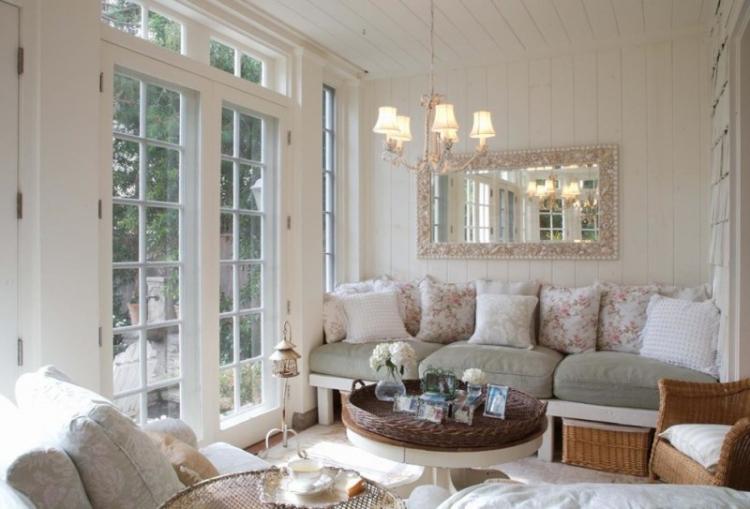
Finishing features
Provence is completely natural materials and maximum harmony with nature. It does not use acrylic, plastic or chrome steel. Even glass in the modern interpretation is not so common. Instead - wood, forging, stone, ceramics, rough rough surfaces.
Floor
The floor in Provence-style interiors is laid out with rough wooden planks, which seem to have cracked from time to time. Aged art parquet looks good, although this solution will cost more. Alternatively, stone tiles, from large blocks to small decorative mosaics.
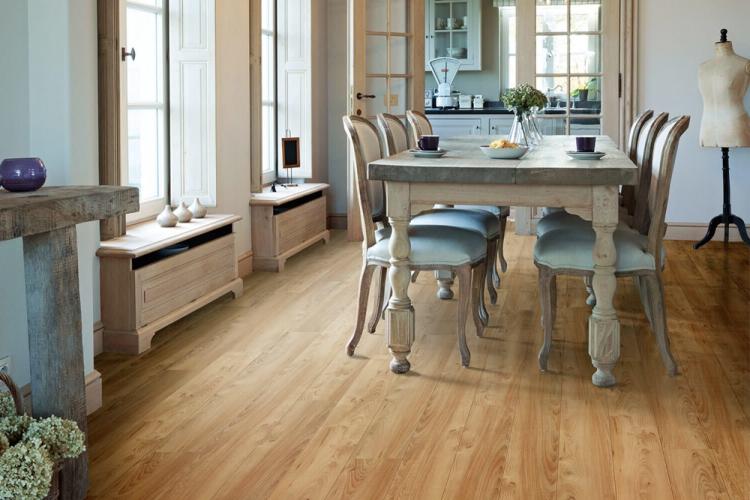
Walls
The walls in Provence are rough and rough, with simple painting or textured wallpaper with pinstripes or floral patterns. Embossed plaster painted in a light shade will fit well here. And sometimes even open brickwork, just not as contrasting as in the loft.
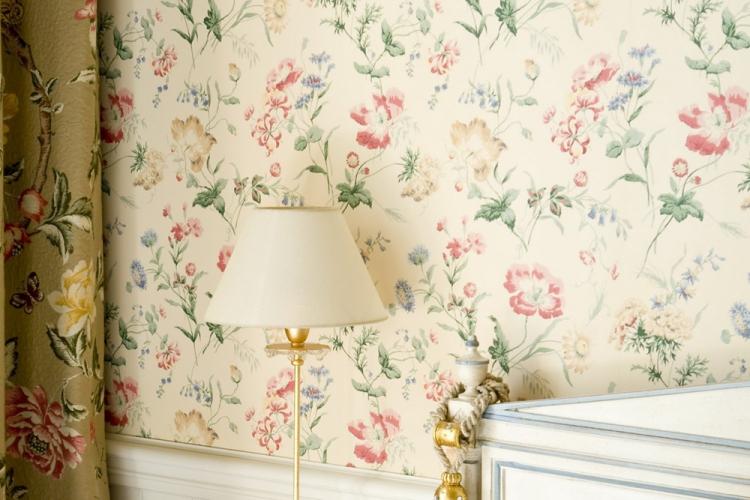
Ceiling
In Provence, there is no place for the overly complex ceiling structures that are so popular in modern minimalism. If you choose stretch ceilings, give up the mirror gloss in favor of elegant matte and romantic satin canvases.
But again, the simplest classic whitewash or light plasterboard structures are appropriate. Protruding wooden beams look good, but not too massive and in lighter, muted tones.
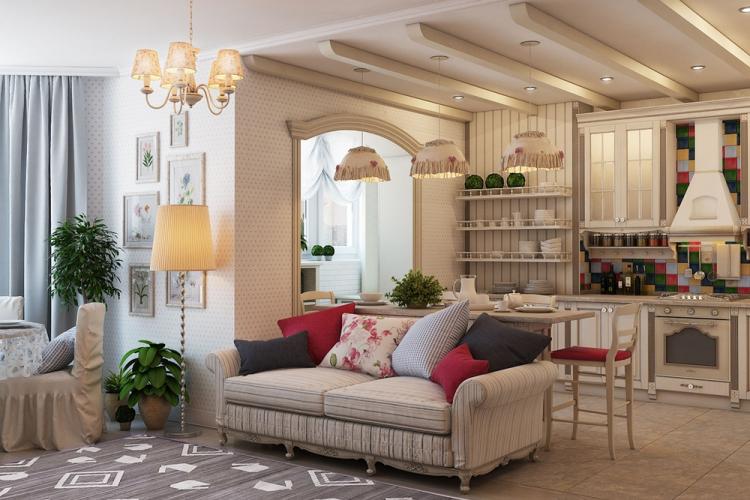
Lighting and illumination
Provence requires a lot of light, but it should be warm and soft light, not "sterile" white.The decorativeness of the style allows the use of noticeable catchy lamps, beautiful shades and lampshades, elegant sconces and table lamps.
Pay attention to the classic wrought iron chandeliers with ceramic shades. Models with candle-shaped lamps, retro lamps on aged pendants, thick glass lampshades look good.
There will be appropriate classic tall floor lamps, tiffany lamps, wicker decor and textile inserts with floral patterns. And for local accents, use elegant sconces with unusual patterns.
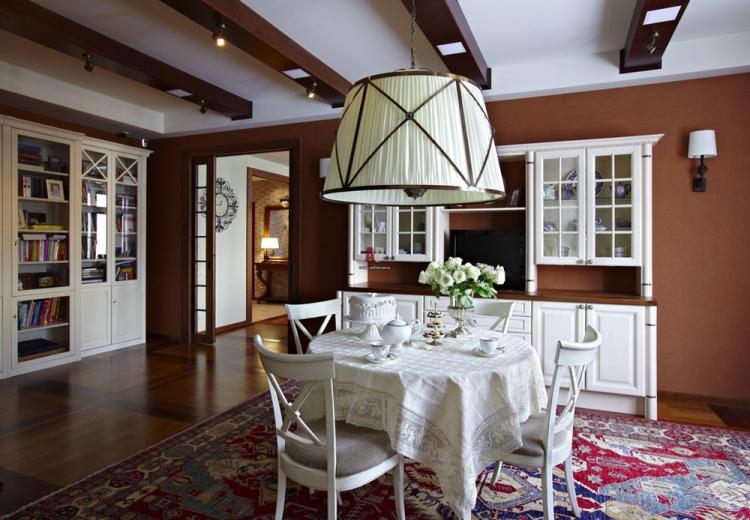
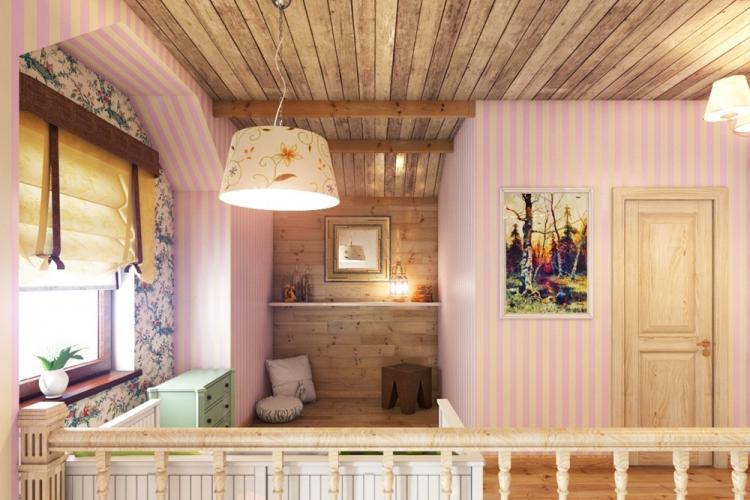
Provence style furniture
Furniture in Provence is slightly shabby and shabby, with carved decorative elements. A lot of forged parts are used: textured fittings, coasters, frames, openwork headboards and backs of chairs, fireplace grates, kitchen coasters, hanging flowerpots.
Pay particular attention to handles, legs, latches and similar little things. Aged bronze, brass, gilding - all this elegantly complements classic Provence and gives it a touch of that very French chic.
Really old antiques are especially appreciated. But even new furniture can be aged to imitate chips, scuffs and shabby finishes. If you wish, you can even do it yourself.
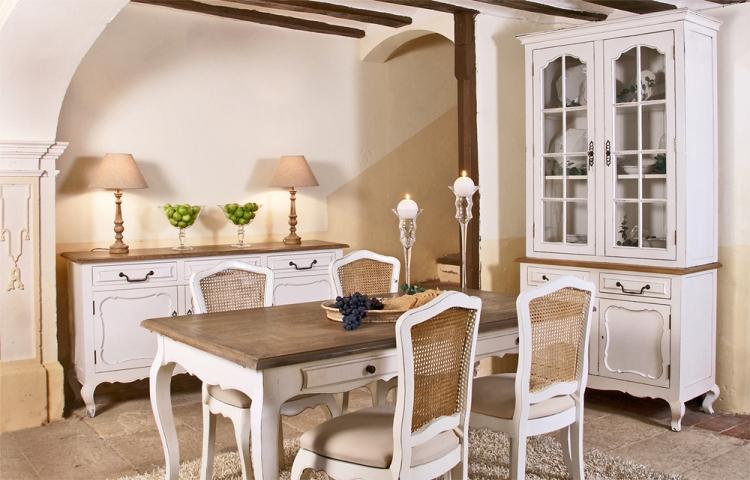
Textiles and decor
Textiles are one of the most expressive accessories of Provence. Everything comes in handy here: tiered curtains, tablecloths, covers, cushions for the sofa and stools. Choose elegant bedding for the bedroom, and elegant fluffy rugs, towels and bathrobes for the bathroom.
The main fabrics are linen, coarse calico, cotton in all its variety, even sackcloth with decorative trim. From colors in the course of the strip, a cage, a small floral print. Feel free to combine different textures and any pastel shades with each other.
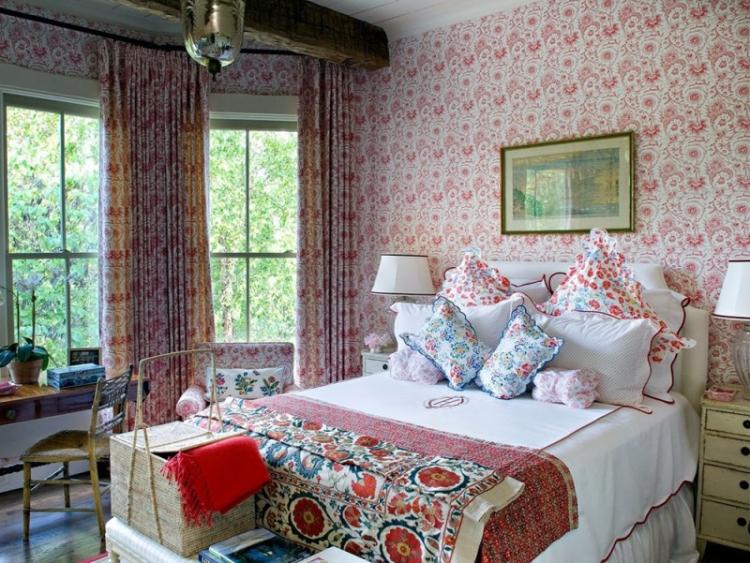
For window decoration, choose wooden frames and frame them with natural curtains with hooks, folds, ruffles and bows. Arrange a wide seating area with pillows or small seedlings on the windowsill.
Hang pictures and decorative panels on the walls, place flowerpots, small souvenirs, candles, photographs in wooden or forged frames on the tables. Handmade in all its forms is good for decoration. And in the kitchen and in the dining area, arrange decorative jars with spices, cereals, herbs and preserves.

Color spectrum
In Provence, pastel colors in any of its manifestations "run". The main plus of bleached and faded shades is their excellent compatibility with each other. Catchy contrasts are almost never used in such interiors.
Lavender color
Lavender is one of the main symbols of Provence, so it is practically impossible to do without it in the interior. And if you want to dilute the colors - pay attention to violet, lilac, wisteria.
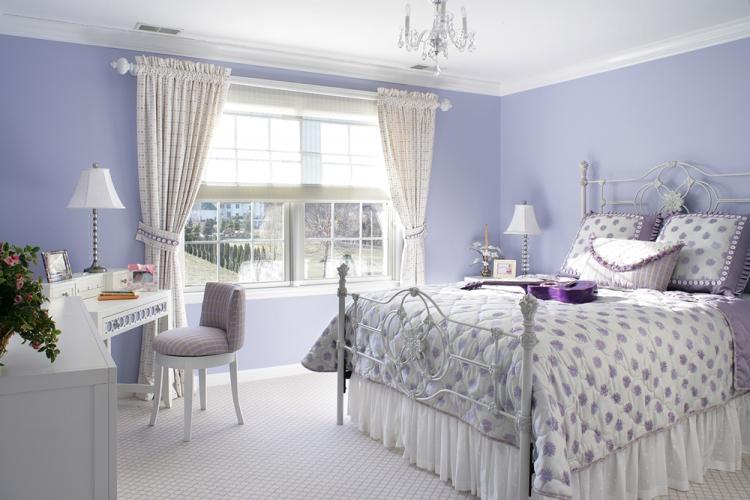
Light green color
Choose warm milky shades of light green, not too neon or too lemon. Complex colors are also good: mint, olive, khaki - they all harmoniously fit into the aesthetics of Provence.
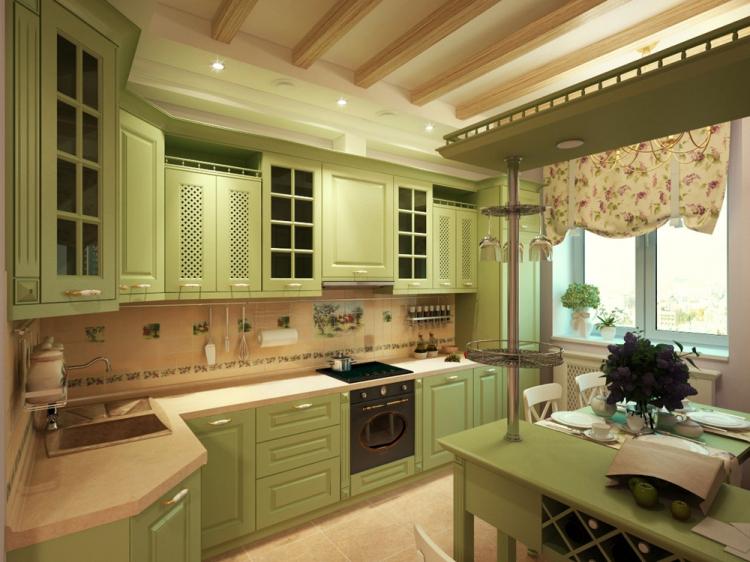
Blue colour
In Provence-style interiors, heavenly and floral shades of blue are good. Forget-me-not, cornflower blue, azure tones look interesting. And if you need something more complicated - turquoise, sea wave or cyan.
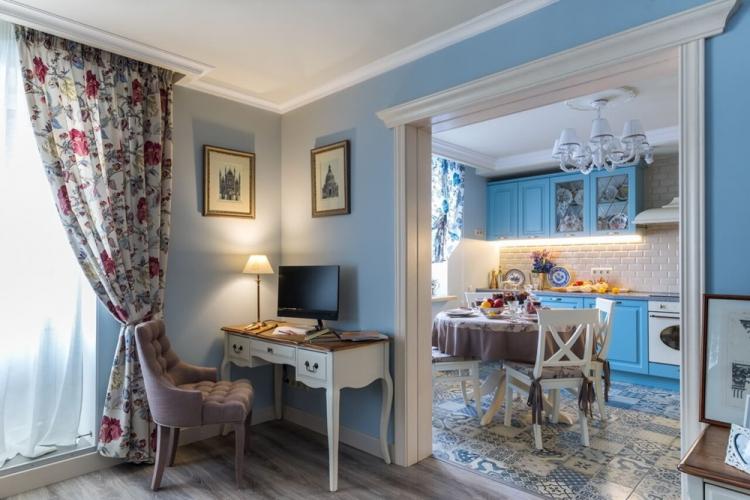
Pink color
Puppet pink is not peculiar to Provence, but muted ashy, dusty, pearl and smoky look very organic. Good and salmon is a real trend that will give the old interior a light modern touch.
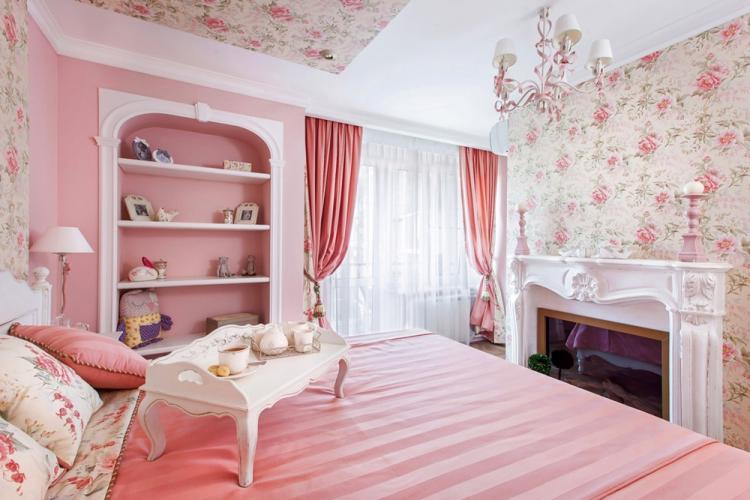
Bright shades
Take complex saturated shades of pink, magenta, orange, mustard, grassy green as bright accents. The main thing is to choose natural colors, not their flashy synthetic variations.
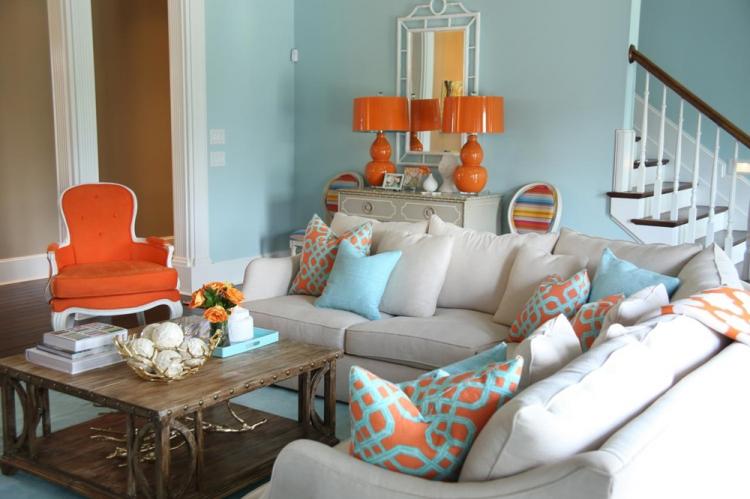
Dark shades
For dark accents, use deep muted tones: eggplant, grape, chocolate, cobalt, sapphire, malachite. Radical black is almost never found in elegant French interiors.
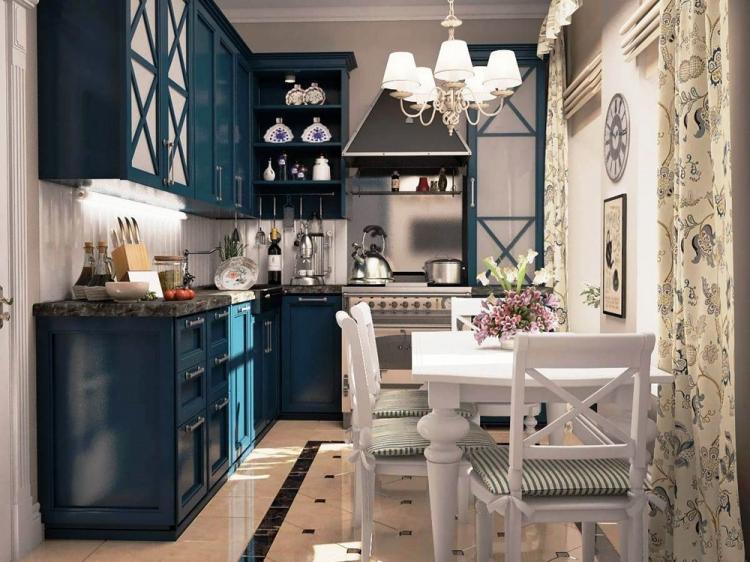
Provence in the interior of the living room
Most often, the living room is the largest room in the house, so there is room to turn around with decorative Provence. If you succeed, be sure to install a fireplace, because such a bright accessory in itself already sets the necessary atmosphere and mood.
If you want to zone the living room, Provence will come in handy here. Sliding partitions, curtains, light accents will organically fit into it. And the visual zoning with flowers here is as organic as possible, because the entire color scheme is well combined with each other.
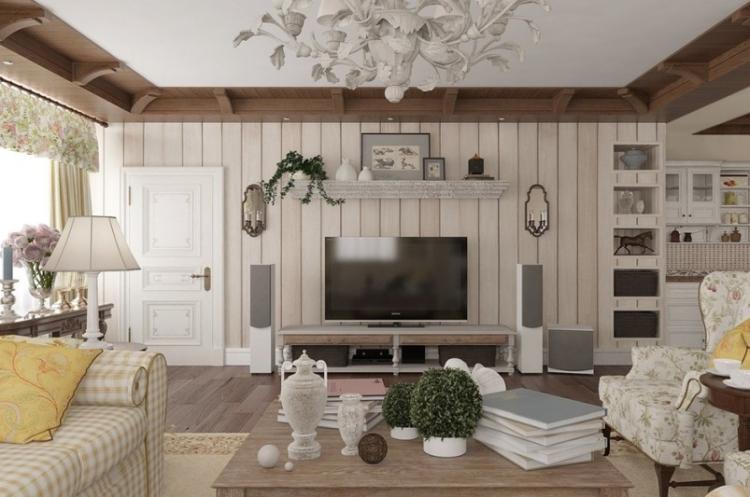
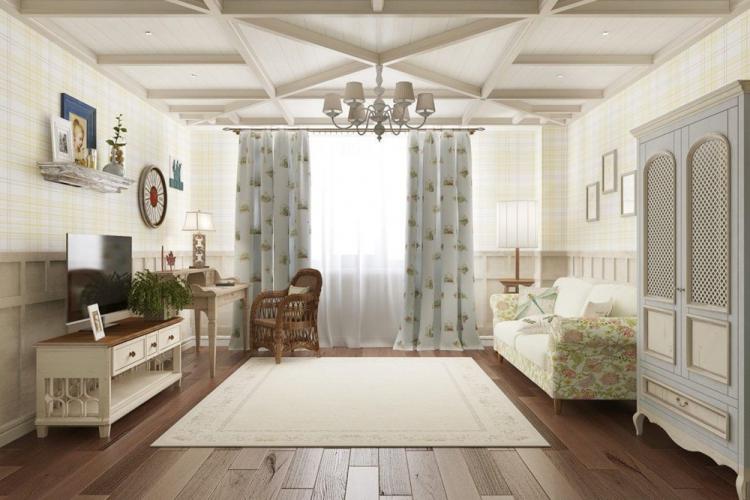
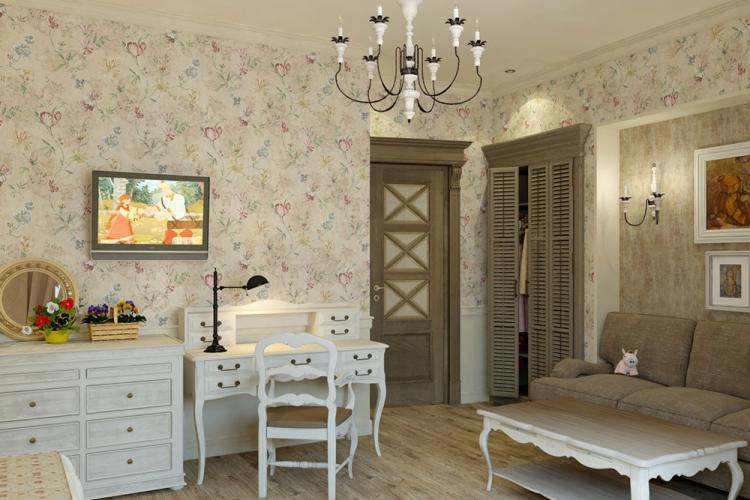
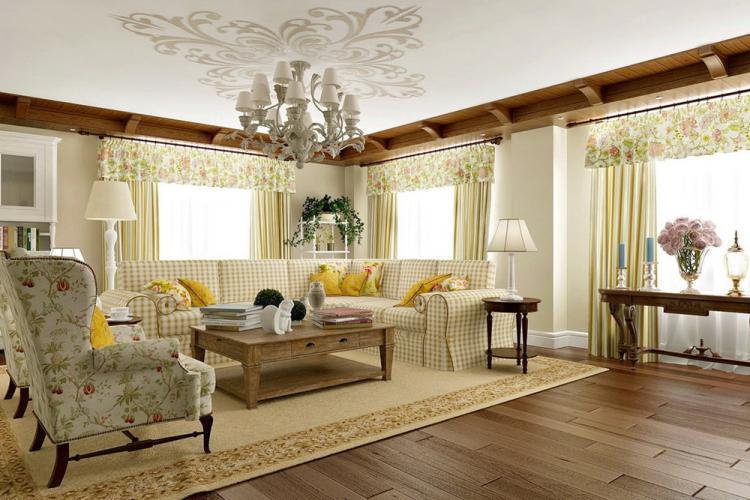
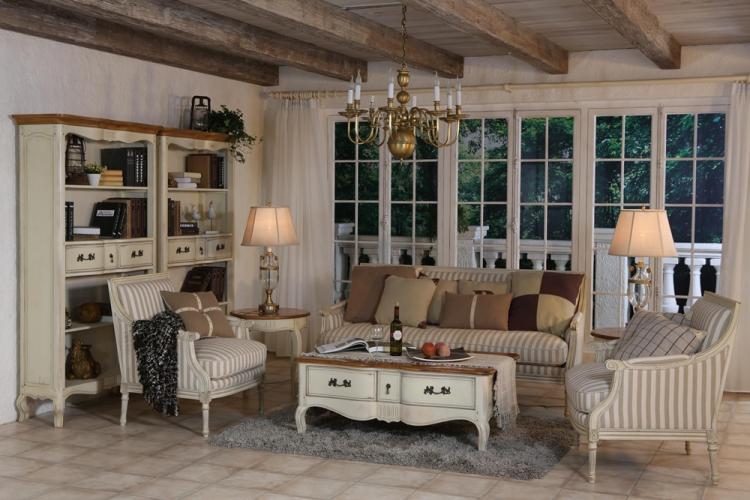
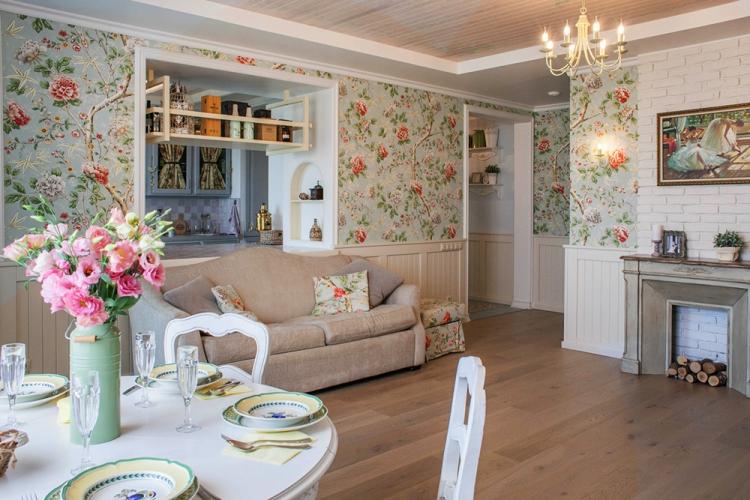
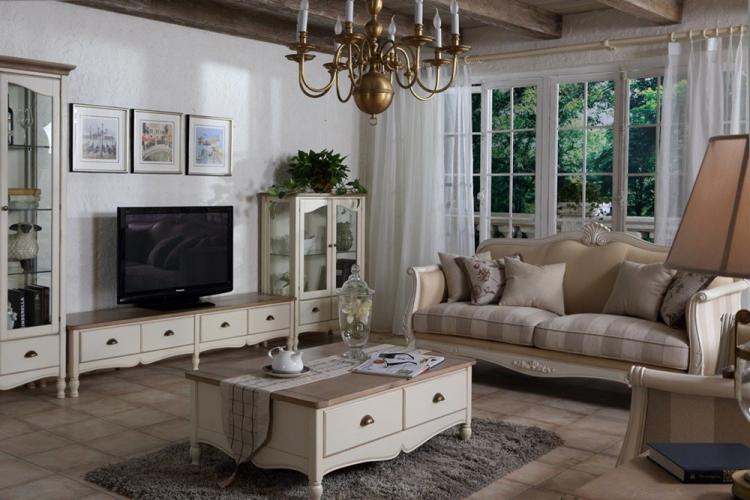
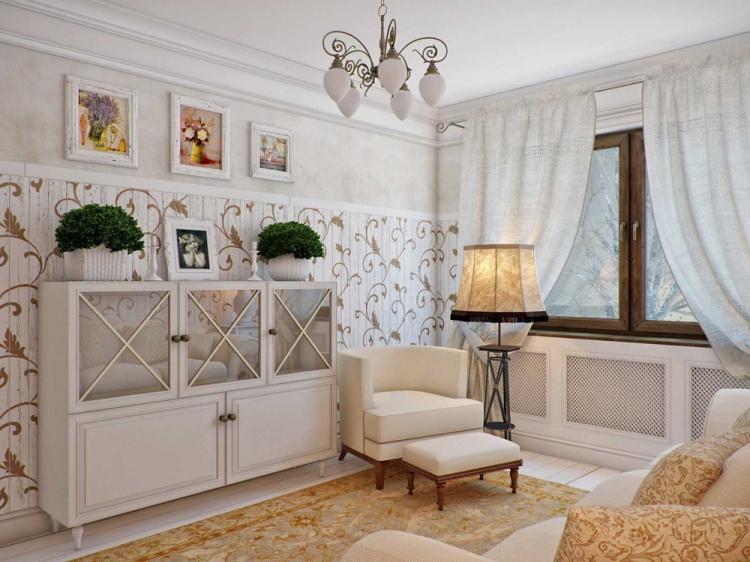
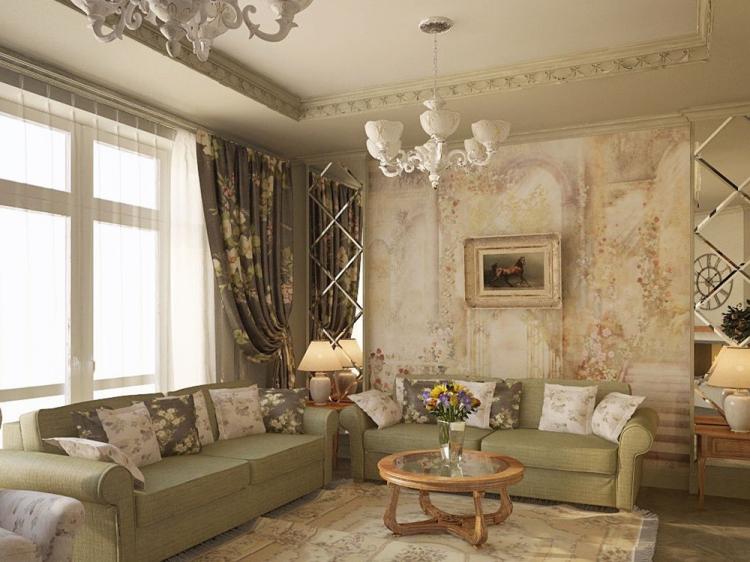
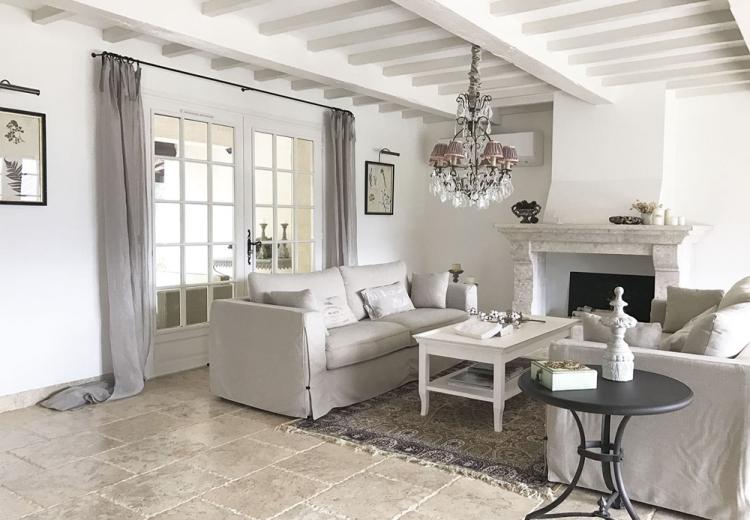
Provence in the interior of the bedroom
Delicate, romantic and calm Provence is one of the most successful bedroom styles. It calms and relaxes, and this is the main secret of sound healthy sleep.
Provence style beds are a real work of art with wrought or carved headboards and a kingdom of rugs, bedspreads and pillows. Pay special attention to natural and high quality cotton or linen bedding.
And if you want to add luxury, choose an elegant canopy to your bed. Just remember that it constantly requires maintenance, because it inevitably accumulates dust.
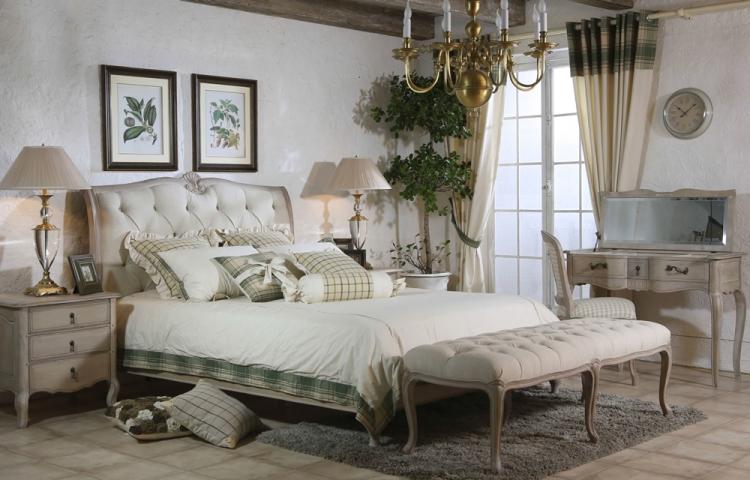
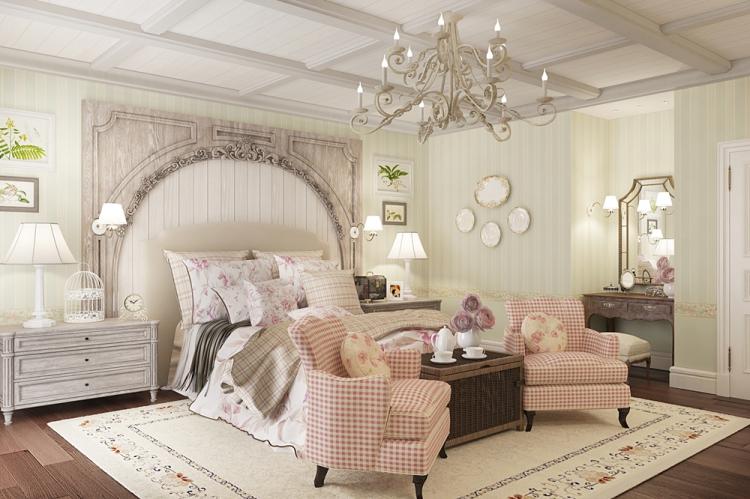
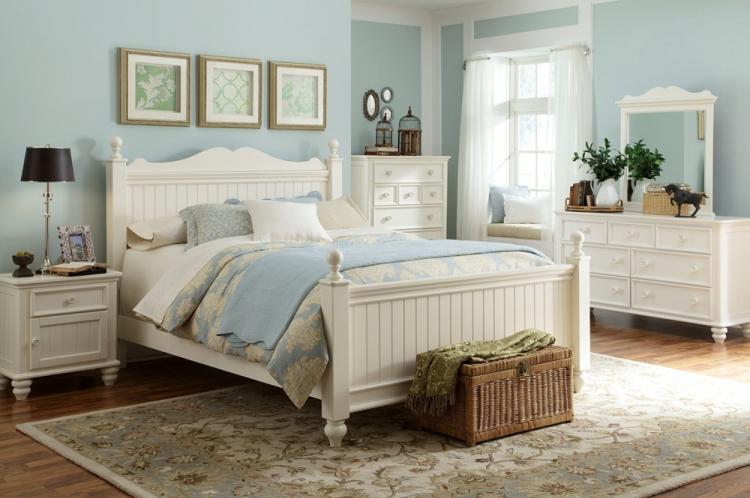
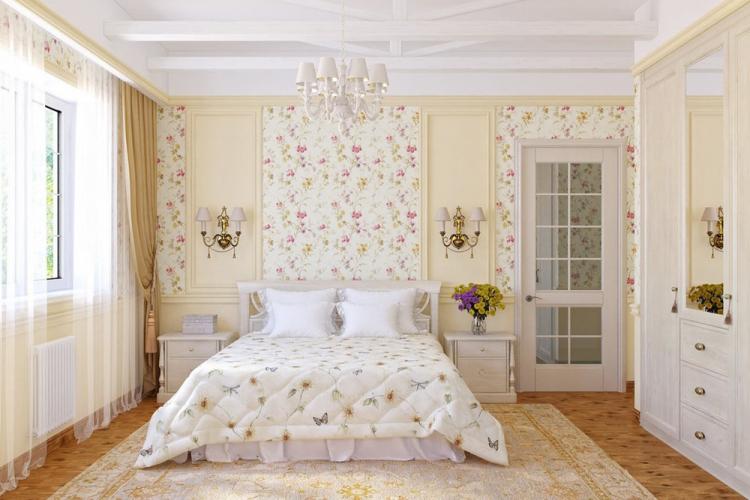
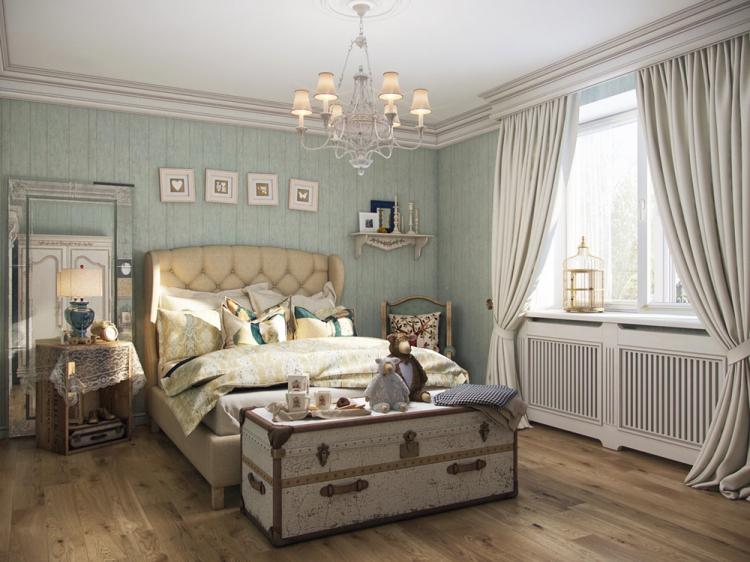
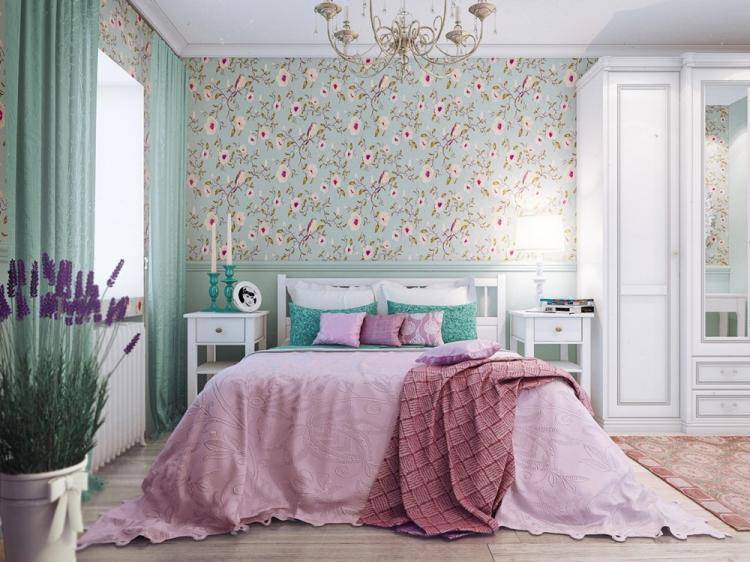

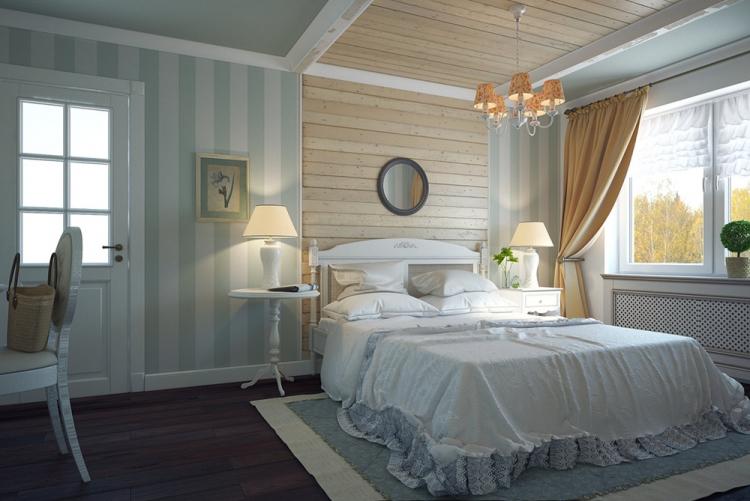
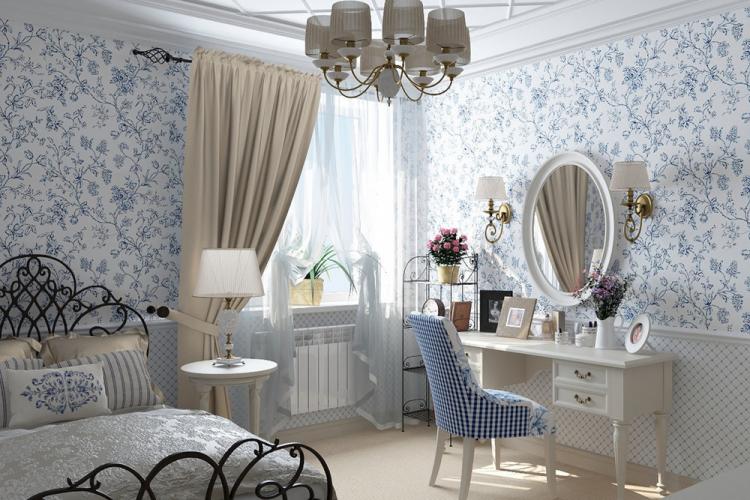
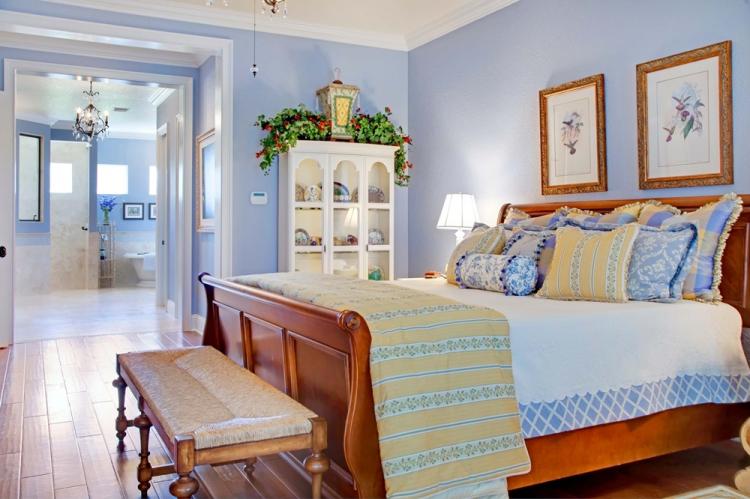
Provence in the interior of the kitchen
The Provence style kitchen is not only aesthetic, but also practical, because many typical kitchen little things can be safely used instead of accessories. Pay attention to decorative kitchen sets of coasters, tools and accessories.
Even a beautiful antique teapot will be a stylish addition to French rustic cuisine. But it is better to integrate modern technology into headsets right away so that the metallic gloss does not stand out against the general background.
Do not forget about textiles, because besides tablecloths and curtains, there are also rags, napkins, potholders, towels and a lot of other beautiful little things. It is here that they will come in handy more than ever.
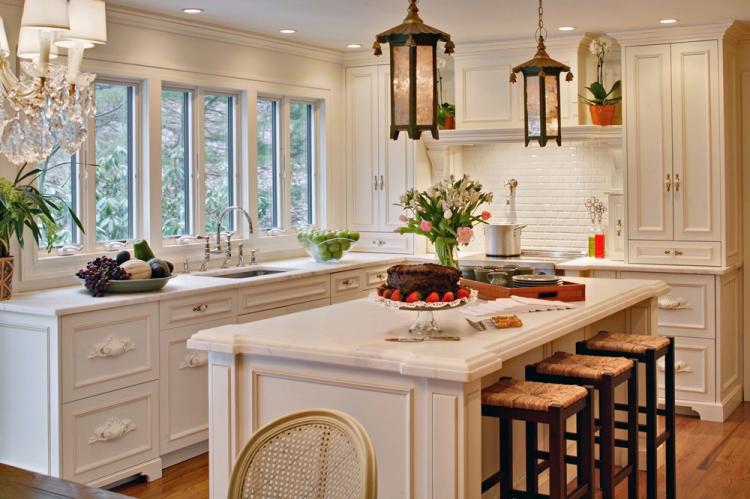
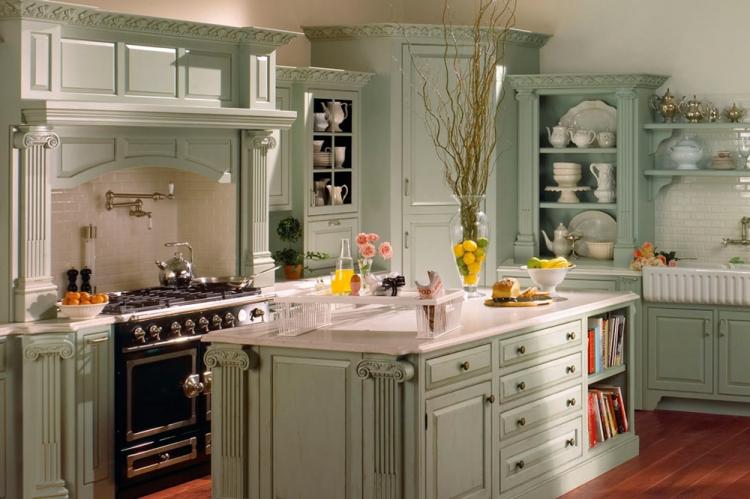
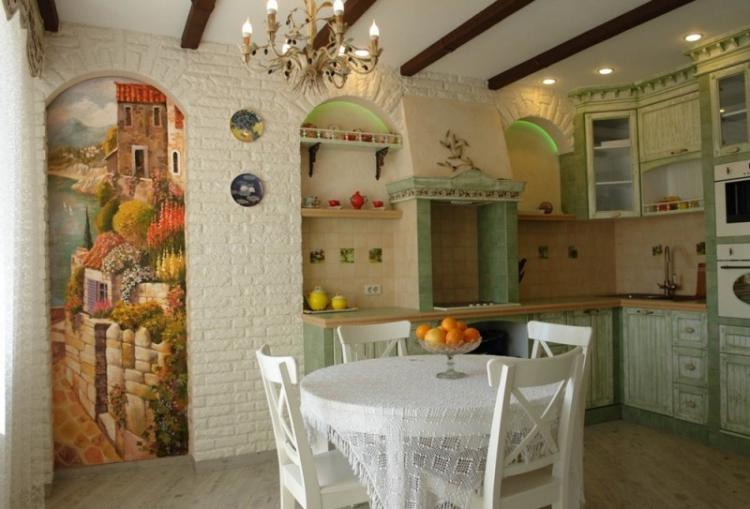
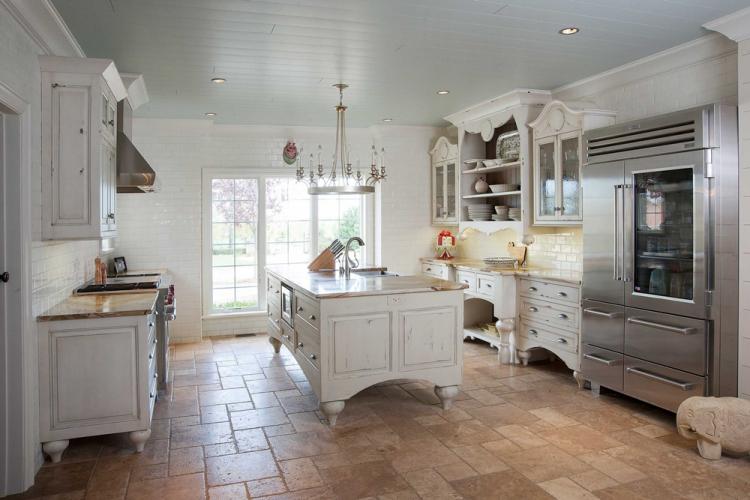
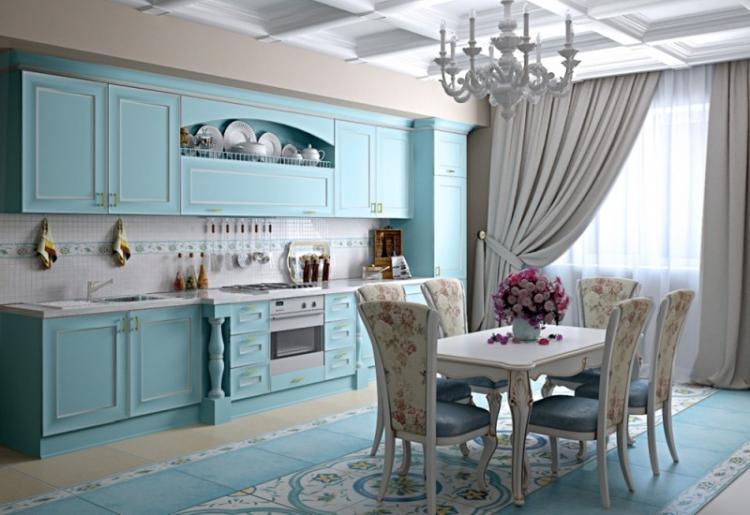
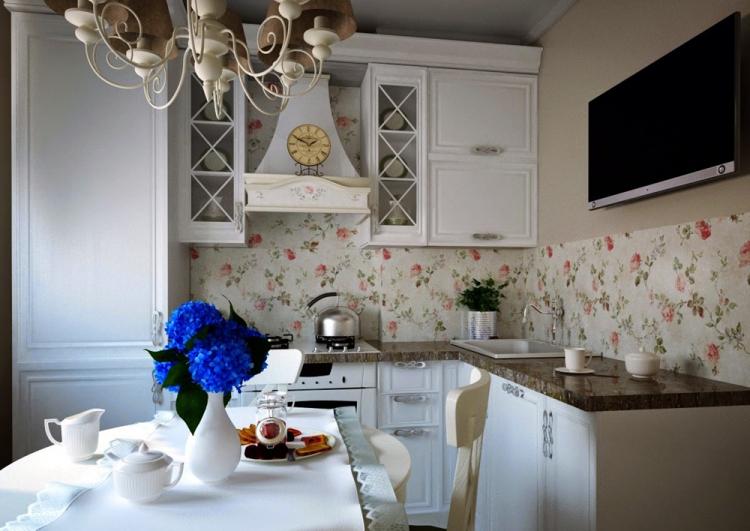
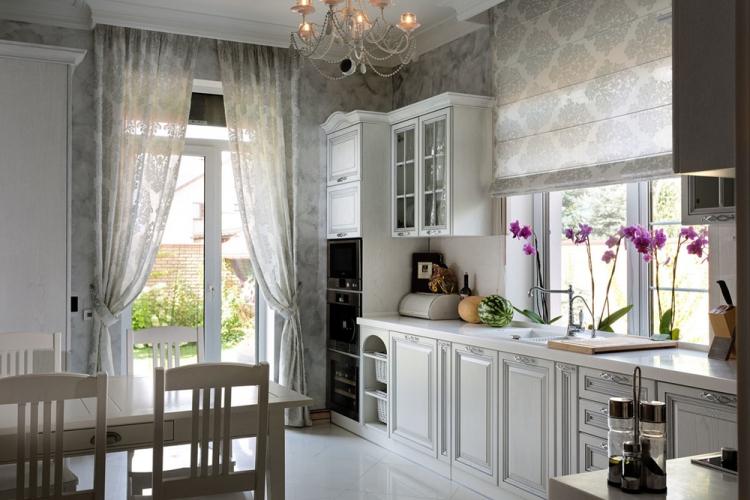
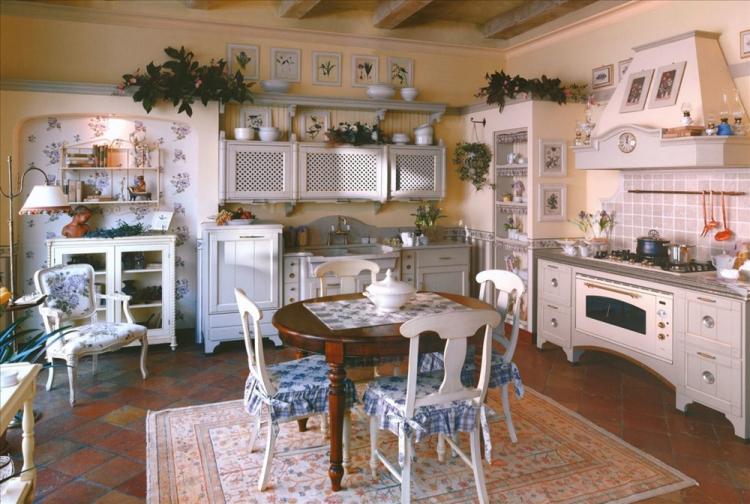
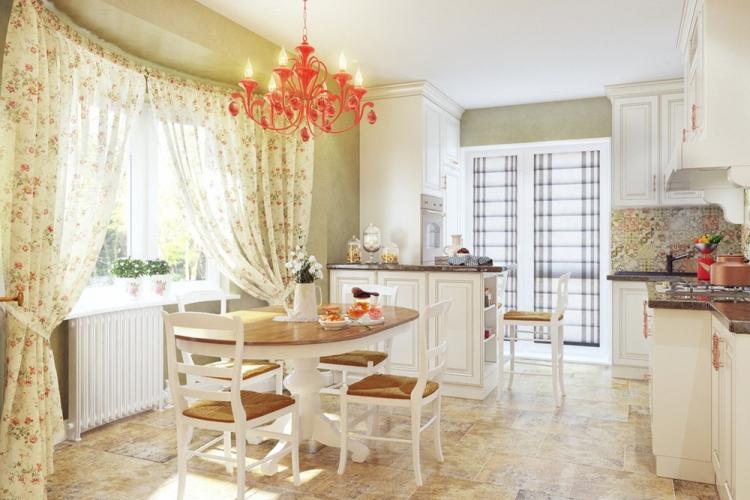
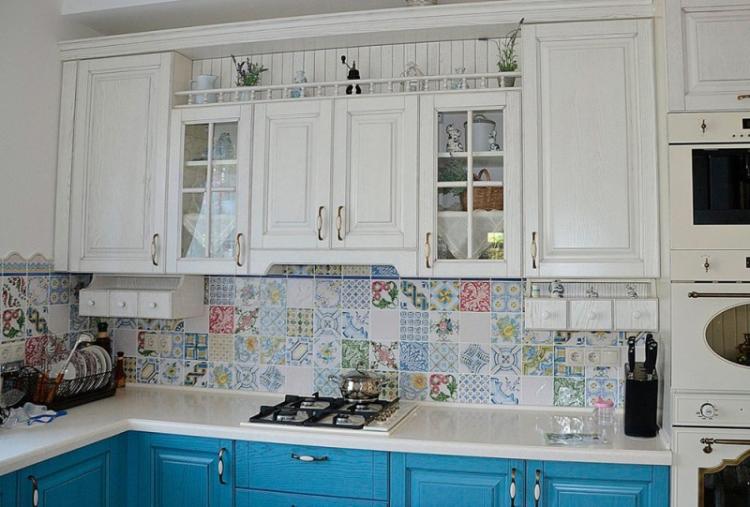
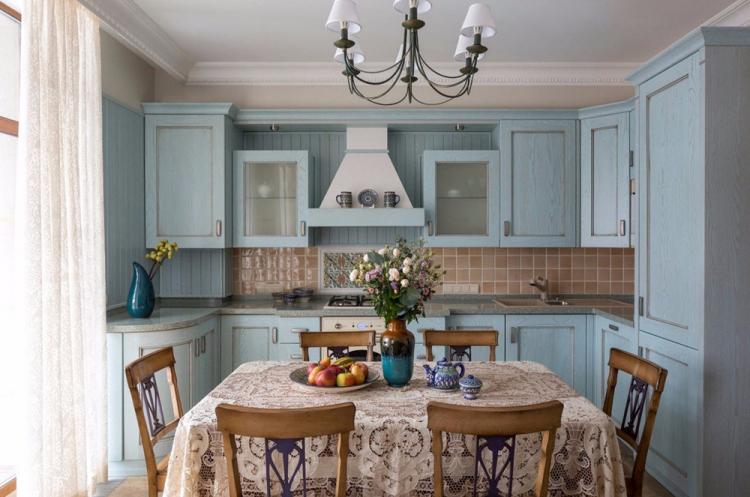
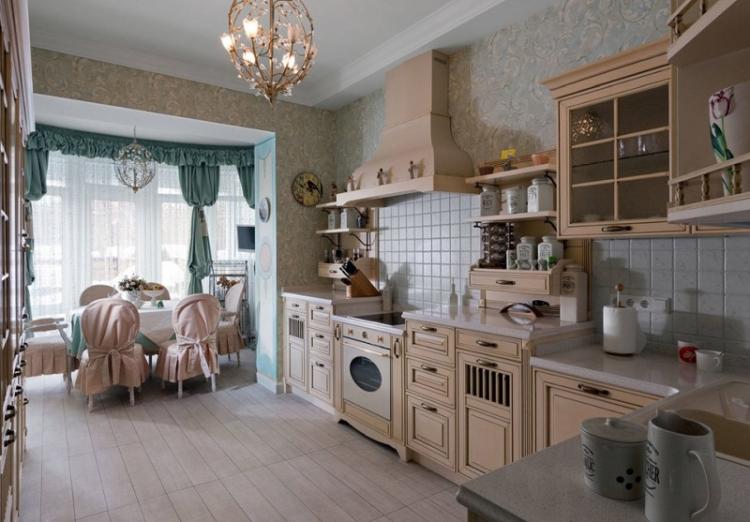
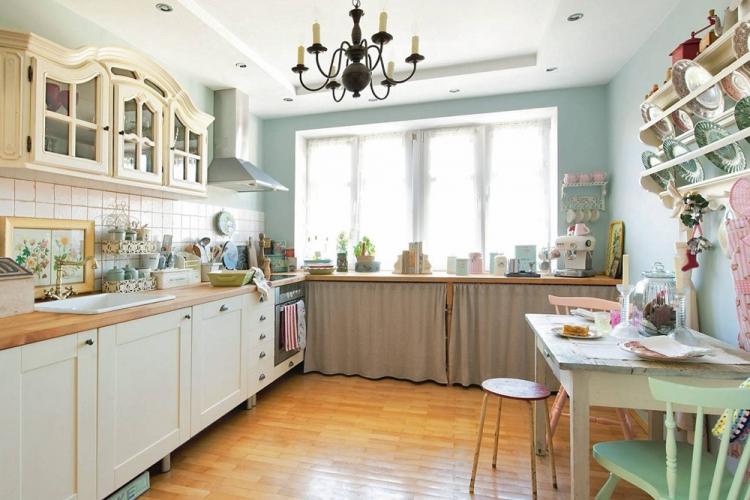
Provence in the interior of the bathroom
Decorating a Provence style bathroom is not so easy, because many materials are sensitive to moisture. But an unusual effect can be created even with textured ceramic tiles and expressive fittings.
The main plus of a Provence style bathroom is light shades that visually enlarge the room and fill it with air. The second plus is the relaxation and lightness of the French province, thanks to which bath procedures will become even more pleasant.
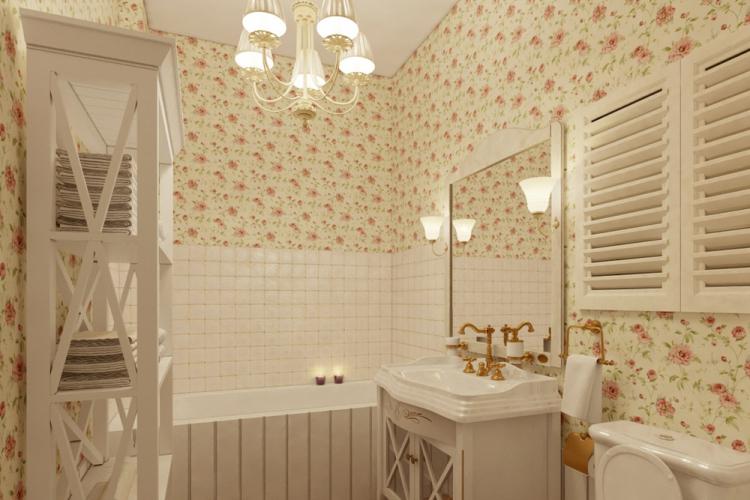
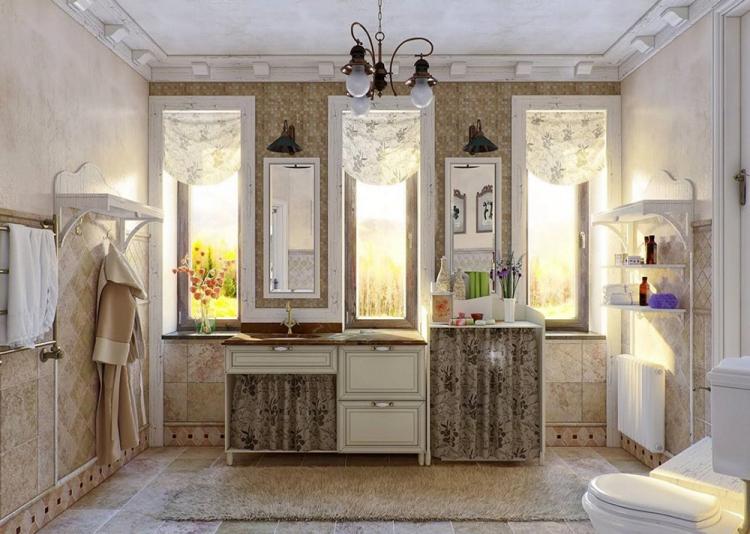
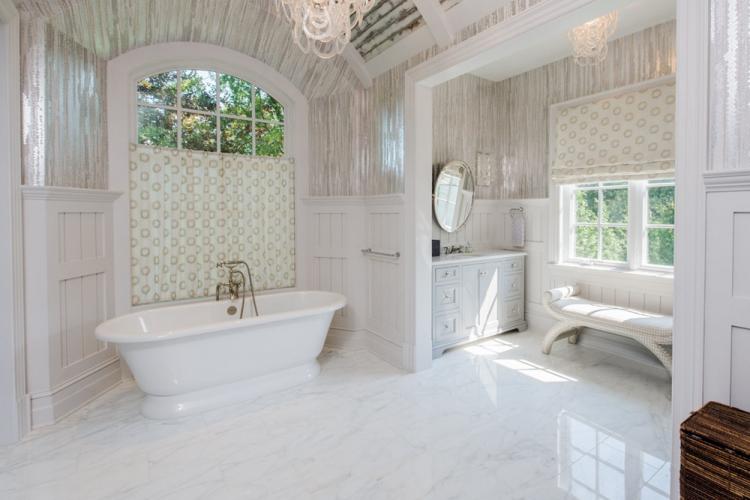
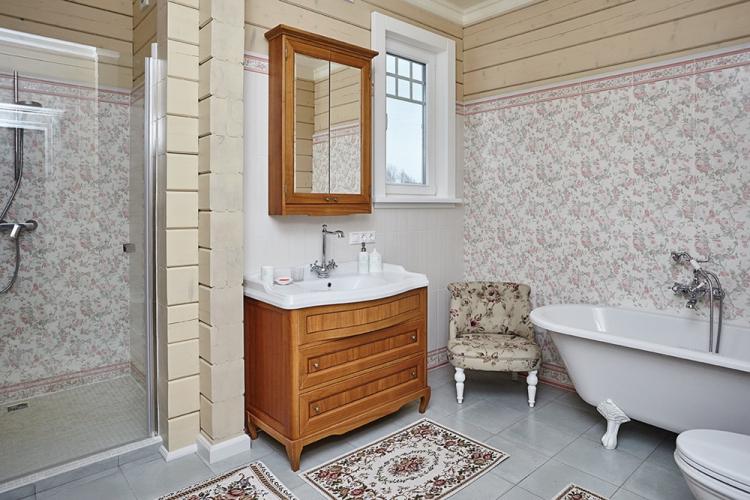
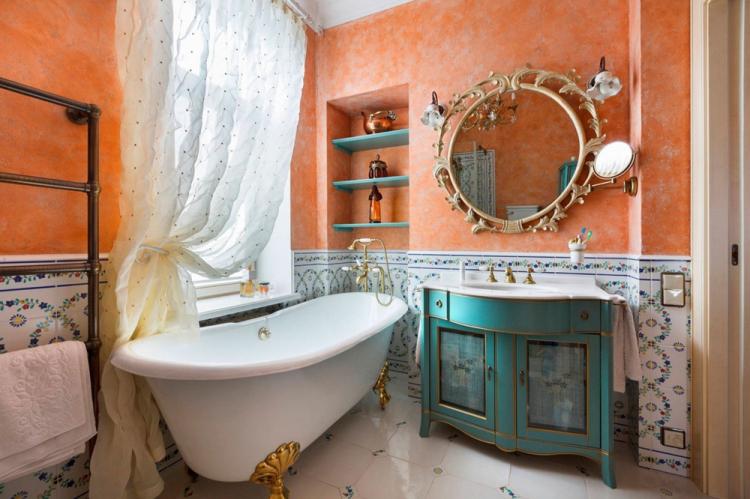

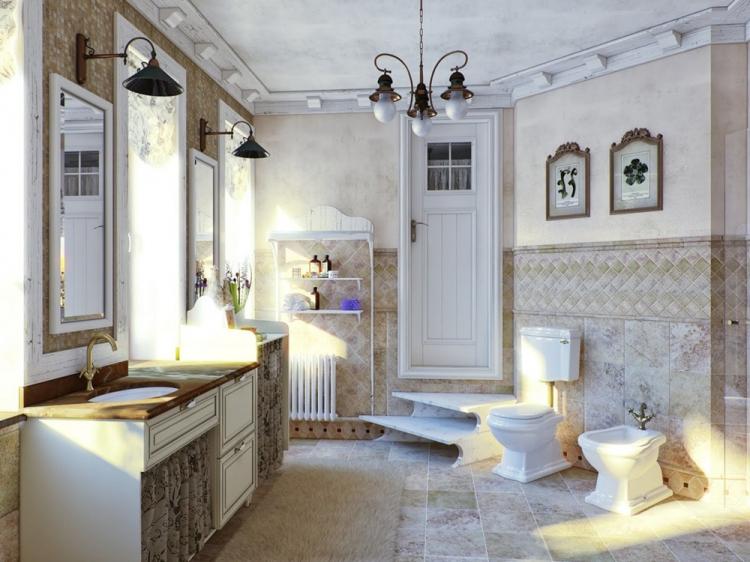
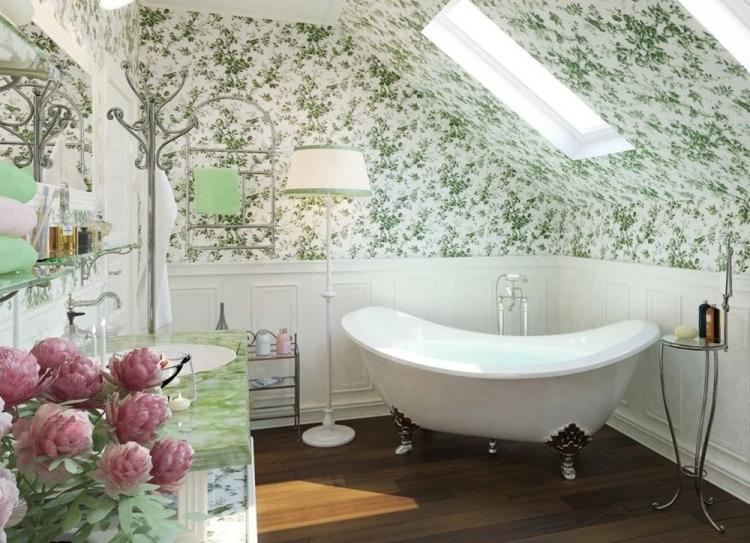
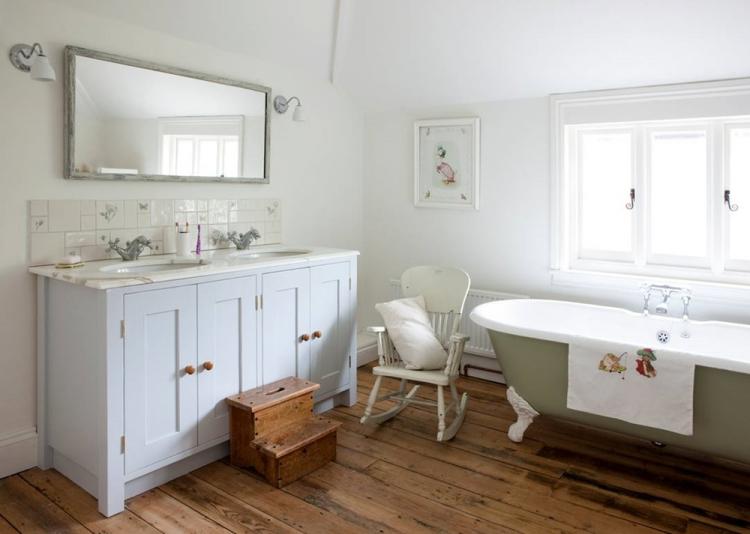
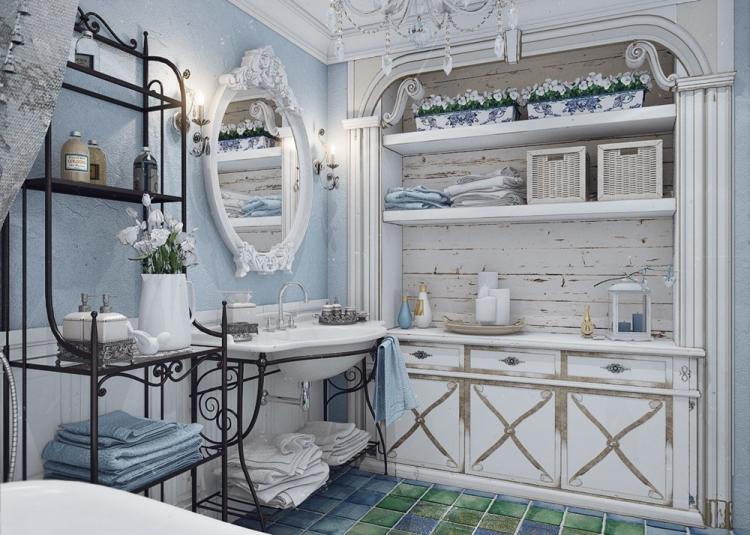
Provence in the interior of the hallway
The hallway is a visiting card of any apartment, because it is she who sets the first impression. Therefore, you should not neglect its decoration, leaving all the best for the next rooms.
The Provence-style hallway will definitely be remembered by guests from the first time. A good mood is a guarantee of a pleasant time. Moreover, wood, stone, forging - all this is great for decorating a corridor.
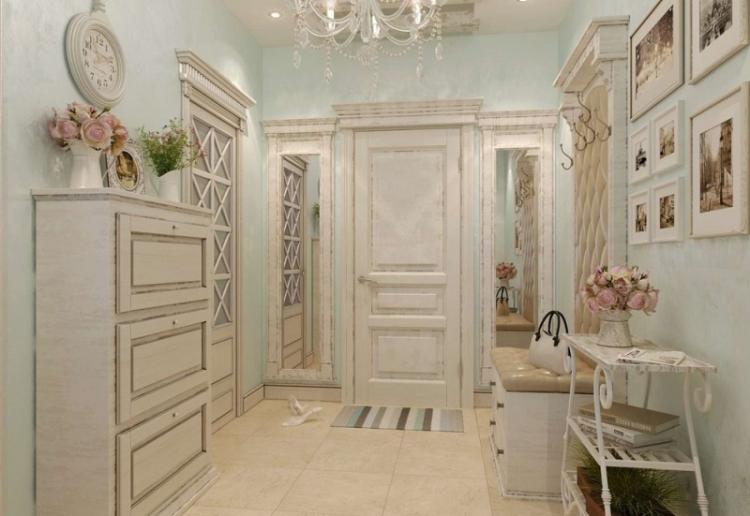
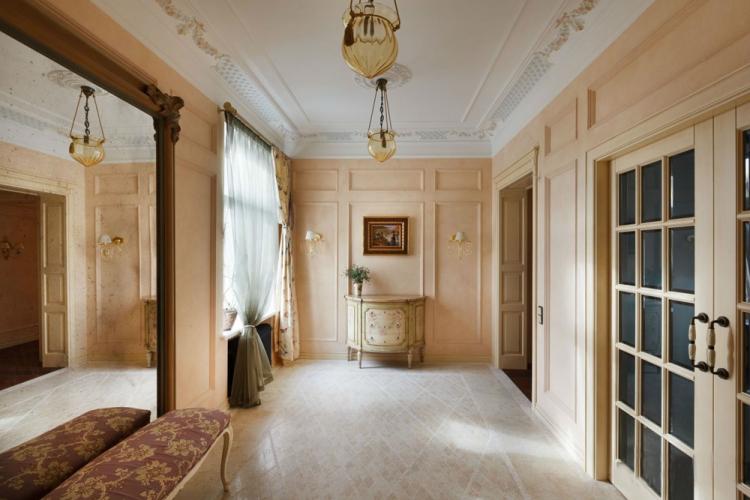
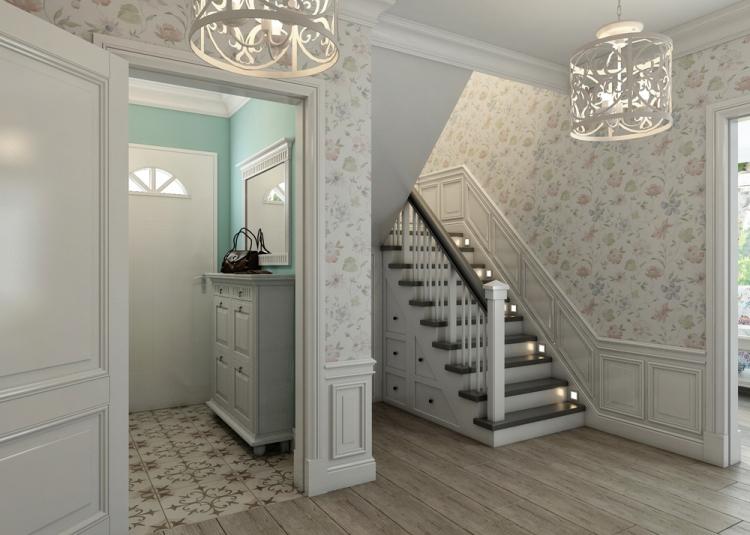
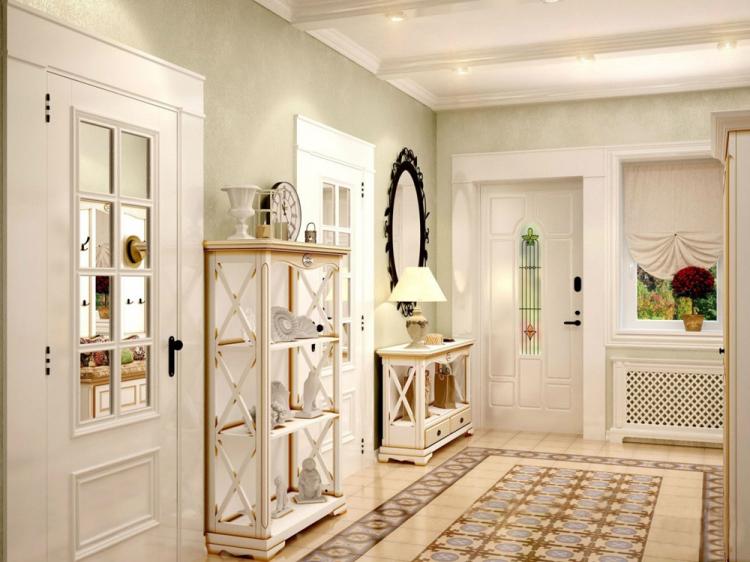
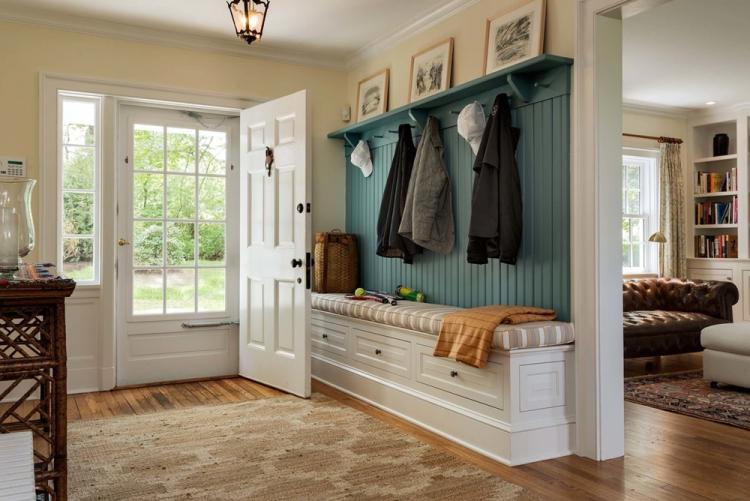
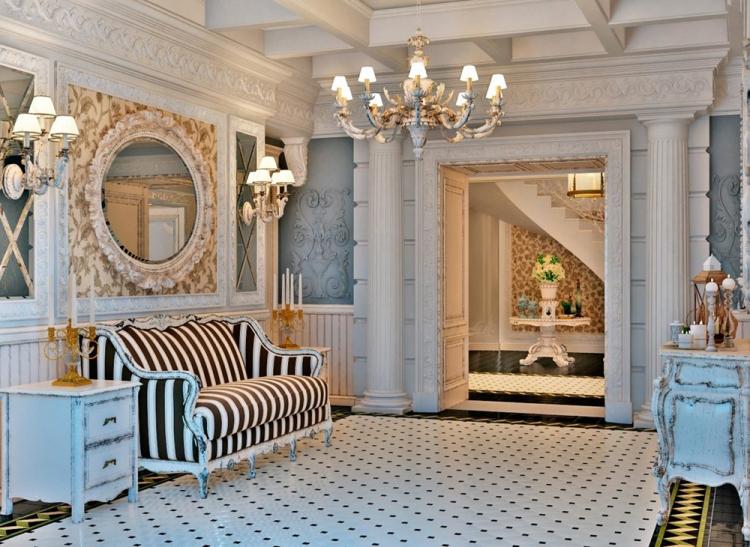
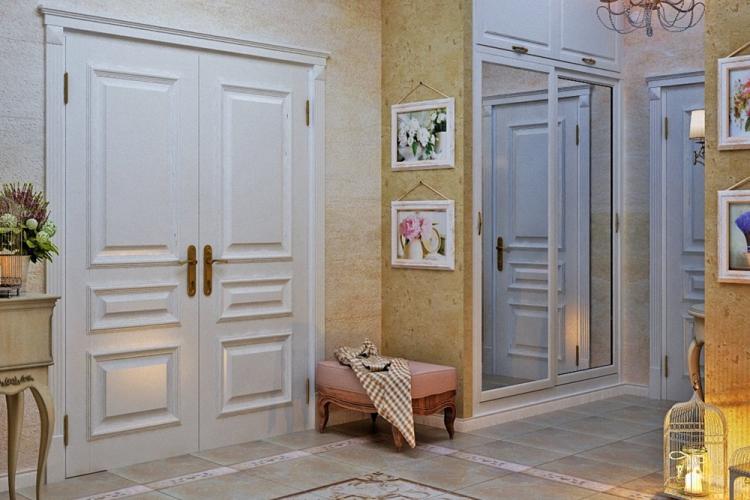
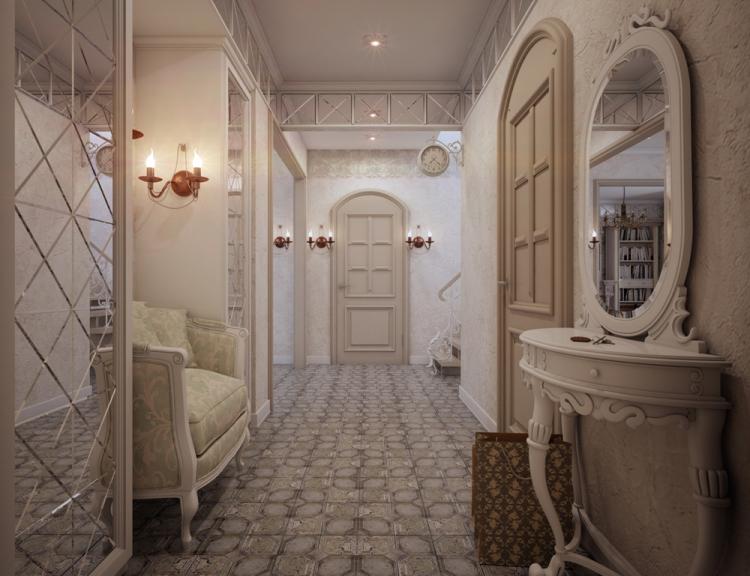
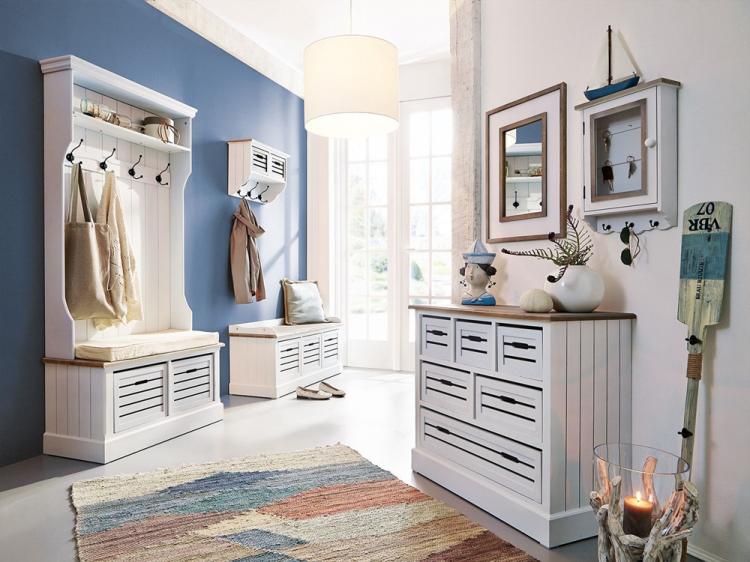
Provence in the interior of a children's room
Complex decorative styles in a children's room are always a double-edged sword. The more small details, the more difficult it is to take care of them and the more difficult it is to look after the child until he grows up.
But there is also a downside. Firstly, the delicate pastel provence is very calm and cozy, but children are more sensitive to colors and any other external factors. Secondly, such an expressive style in itself immediately creates a fabulous atmosphere in the room that will delight both kids and adolescents.
